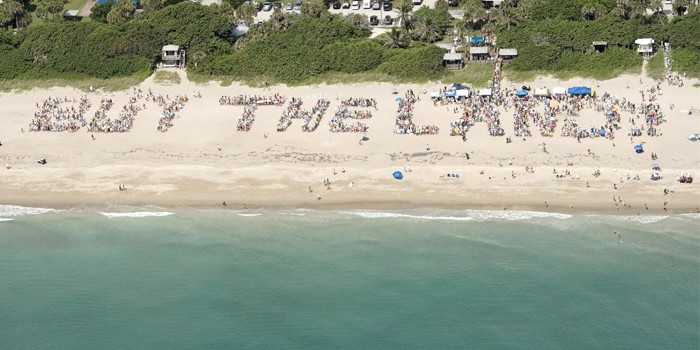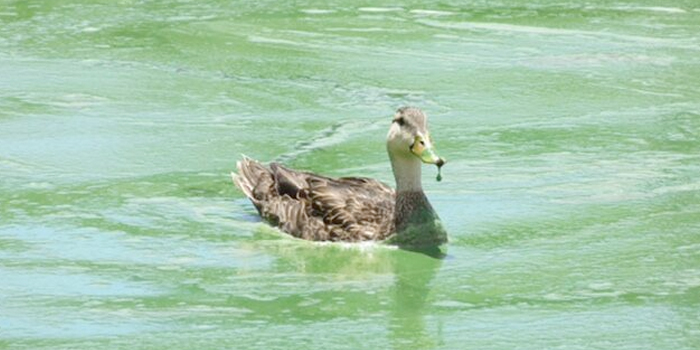Jupiter Medical Center
- 561.263.2234
- email us
- Jupiter, Florida, United States


JUPITER, FL – August , 2017 – With such a large accolade of buzzwords being thrown around today in the news, social media, and even regular conversations, it’s difficult to keep track of which topics are essential and which ones are merely everyday fodder. From “gluten free” to “global warming” to “not real leather,” it makes one wonder: Are these just fad words people throw around to seem more aware and educated, or do they pertain to actual, real circumstances we should be more aware of?
The majority of the time, the circumstances that do inspire these phrases are a threat to society, and in some instances, even on a global scale. Lake Okeechobee, located in our very own town, is not an exception. As it stands, the lake is in potential danger of breaching the Herbert Hoover Dike. “Breaching” in this instance refers to the dike, the man-made wall surrounding Lake Okeechobee, eroding or failing due to overflow during a rainy year. This is in fact very plausible, and could happen if the lake surpasses a certain level. When the water level reaches 15 feet, protocol calls to start releasing water into the St. Lucie and Caloosahatchee Rivers. The dam is at the highest risk for failure when the water level reaches 18 feet, so protocol doesn’t even allow it to get that high.
During a rainy season, there may be multiple instances where water is released from the lake to keep it at a safe level. It also doesn’t help the matter that, according to an article in News-Press.com*, sections of the Herbert Hoover Dike are already eroding. In fact, the dike is about 80 years old, and its structure is starting to show evidence of its age.
This situation should be of immediate, dire concern: Over 40,000 residents, homes, and businesses by the lake are in danger if the dike fails, which was also pointed out in the same article by News-Press. A risk analysis conducted by Lloyd’s of London stated that the repercussions of this probable flood could have “far-reaching effects for all of southern Florida.”
Evan Miller, founder and president of the organization Citizens for Clean Water, explains in greater depth. “Lake Okeechobee discharges, as they are known, bring fresh water from the lake through several drainage canals to prevent the lake from exceeding these levels. The problem we have been experiencing is that the fresh lake water is too fresh and polluted for our now saltwater and brackish estuaries to handle at a high volume,” he says.
“Once the oysters and other natural filters die off from not having enough salinity, it becomes favorable for bacteria and MRSA, which can be very harmful to the marine life, our pets, and us. It has already taken a heavy toll on the environment, ecosystem and our economy through tourism and the ability to enjoy clean water in Florida. The access water that used to flow to the Everglades, Florida Bay, and seep down into Florida’s deep water aquifers, in which we rely on for drinking water, has been cut off or blocked by the Herbert Hoover Dike and the Everglades Agricultural Area (EAA). The water from the lake has nowhere to go but east and west to our coastal communities.”
“Recently, we have been seeing algae blooms of highly toxic blue-green algae which is now known to be connected to BMAA, a neurologic toxin that can attribute to diseases such as ALS, Alzheimer’s, Parkinson’s and liver disease,” he explains further. “The algae is a result of nutrients in the lake deposited by the runoff. Recently there has been ‘back pumping’ into the lake from the EAA. This means moving polluted water from one body of water to another.”
So, is this detrimental to water intended for everyday use? The answer is a very strong “yes.”
Lake Okeechobee is indeed a drinking source, and the water coming from EAA contains a tremendously high quantity of fertilizer and pesticide, which could cause another algae bloom. Consider how much water is used in the average household on a daily basis. This includes dishes, bathing, laundry, drinking, and cooking. Now imagine if this water, that you trust for everyday use, becomes contaminated. This would have a significant impact on your day to day routine, as well as becoming detrimental to your health and overall quality of life.
Luckily, there are actions currently being taken to combat this harmful situation. The aforementioned Citizens for Clean Water, otherwise known as C4CW, is a 501(c)(3) public non-profit based out of Jensen Beach. Striving to educate others on circumstances that affect clean water, the organization travels to locations that have problematic water. Here, C4CW hosts events that bring attention to the cause, as well as discussing the Awareness, Advocacy, and Activism Method, also known as the AAA Method. C4CW has become a much appreciated middleman in the lines of communication between citizens and the organizations that specialize on the issues. C4CW allows citizens to let their voices be heard, and residents are taking full advantage of this resource.
C4CW’s inception can be credited to a post on social media by Miller as he expressed his concern regarding the destruction of his hometown. “Manatees, dolphins, and other marine life were dying, people couldn’t go in the water, and some of my friends got MRSA bacterial infections at my local surf break where I grew up surfing my whole life,” Miller elaborates.
So, he took action.

“I decided to organize a protest at the St. Lucie locks and ground zero for the Lake Okeechobee discharges in Stuart,” Miller says. “This brought together thousands of like-minded, concerned citizens of the Treasure Coast, the West Coast of Florida, and all the way around the state in August of 2013. The event has become known today as a historical pivoting point in the fight to resolve the Lake discharges.” Alas, it didn’t stop there.
Miller continues, “Since then, C4CW has organized more rallies, beach cleanups, and more educational awareness events. Last summer we organized a viral photo that spelled out ‘Buy the Land,’ which represents cleaning the water and restoring the natural flow of water south to the Everglades. This not only grabbed the attention of the media, it called on our lawmakers and elected officials to take action.” What Miller means by “take action” is the introduction of Senate Bill 10 (SB 10). In short, SB 10 was proposed to help reduce the amount of damaging discharge that flows from Lake Okeechobee. The bill would build a reservoir just south of Lake Okeechobee to help absorb some of the blow from the release of water from the dike. “Today, we need the public to get involved by becoming a ‘citizen for clean water’ to teach others around us to be an advocate for their environment and to know that their voice can make a difference,” Miller states.
These actions are vastly appreciated: as the website states, “Donations and more volunteers are always welcome and greeted with a smile and a thank you for the support.”
C4CW board members that stand beside Miller include Secretary Jessica Coover, and Treasurer Kim Strieber. “Our team and volunteers consist of many,” the president says. The full team consists of 15 individuals, all dedicated to serving the cause. “Keep an eye out for C4CW in the future coming to your area to address the issues of clean water,” says Miller.
Visit citizensforcleanwater.org to learn how you too can help this organization by donating, volunteering, and more. References: * The News Press. Article: “Lake Okeechobee dike safer, but work remains.” http://www.news-press.com/story/news/2017/02/13/lake-o-dike-safer-but-work-remains/97859372/
Senate bill 10 waiting approval in the house of representativesIn April of 2017, Senate Bill 10 passed in the state Senate. The bill proposes to build a reservoir just south of Lake Okeechobee to help reduce the amount of harmful discharge being put into the rivers and estuaries running through South Florida. The reservoir would take on some of that disposed water, discontinuing the push of contaminated water from Lake Okeechobee, through the rivers, and into the waters of the Everglades and the South East coast. |